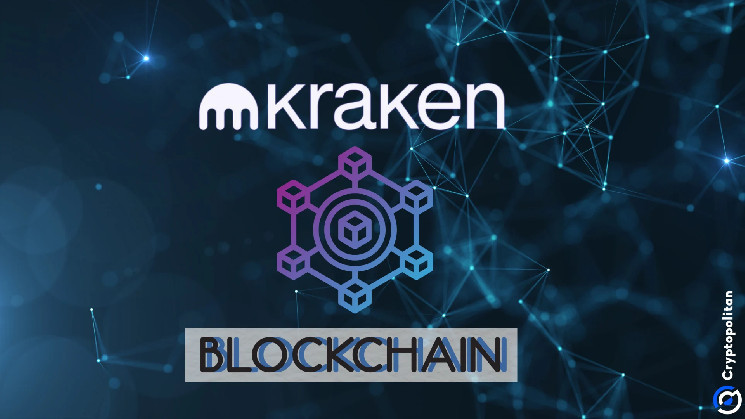US-based crypto exchange Kraken has launched its own blockchain network, Ink. According to the official announcement, the network, which would be an Ethereum Layer-2 network, would be built using Optimism OP Stack and open to the public by 2025.
With the move, Kraken joins other crypto exchanges that have launched their blockchain networks for decentralized applications. Binance was one of the first to have a network with BNB Smart Chain, a Layer-1 network. However, most exchanges, including Coinbase and OKX, have opted for L2 networks.
According to the announcement, Ink testnet, a beta version of the network available to only developers, will launch this year. However, retail and institutional users will only be able to use by 2025 Q1. Kraken described Ink as an example of its commitment to crypto-ethos, as the network will increase crypto adoption by making decentralized finance (DeFi) more accessible.
Kraken said:
“This enables users to effortlessly engage with top-tier DeFi applications, protocols, and communities in a single, integrated ecosystem that they can access wealth-building opportunities onchain.”
Meanwhile, the exchange reportedly has a team of around 40 people working on Ink and plans to encourage developers to build and move to its ecosystem. Part of its plan includes attending the Devcon event in Thailand.
Ink is Kraken’s answer to Coinbase Base
With Ink, Kraken appears to be responding to Coinbase’s success with Base. This is not totally surprising given the competition between the two US-based exchanges, as they account for most of the US crypto volume. Coinbase ranks second on the list of largest crypto exchanges globally, while Kraken ranks sixth.
Meanwhile, Kraken has also said it will not issue a native token for its network. Ink creator Andrew Koller has said the network is an easy-to-use platform with an Apple-like experience. He noted that several dApps and DEXes would be available on the network and accessible via the Kraken Wallet.
Koller said:
“Over time, our users will have these two centralized and decentralized ecosystems playing with each other. We want you to feel that you are doing something familiar.”
Meanwhile, Kraken also plans to be the chain sequencer for Ink but will decentralize the function fully in the future. This is similar to what Coinbase is doing with Base and could offer some revenue for Kraken if the L2 becomes successful. Coinbase generated $53 million in revenue from Base in the second quarter of 2024.
Optimism Superchain continues to grow
Perhaps the biggest winner from the announcement of Ink is L2 technology developer Optimism Limited. Optimism, the creator of the OP network, also has the OP Stack, a customizable Ethereum Layer-2 development kit that many projects have used to launch their L2.
Besides Kraken, Coinbase and electronics giant Sony also use OP Stack for the L2s Base and Soneum. Decentralized exchange (DEX) Uniswap has also said it would use the OP Stack for its planned L2. Overall, Optimism has around 43 L2 projects using its stack with a combined total volume locked (TVL) of $18.1 billion.
Optimism chief growth officer Ryan Wyatt noted this, stating that Ink would join several industry leaders using its stack. He said:
“Optimism’s technology powers the Superchain, and nearly 50% of all Ethereum L2 transactions. As part of this Superchain ecosystem, Ink will contribute to Optimism governance and drive revenue back to the Optimism Collective as we work together to scale Ethereum.”
Interestingly, other L2-focused companies such as Polygon, Arbitrum, Starknet, and zkSync also have development stacks. However, they have been unable to attract the same level of developer interest. Optimism’s biggest competitor, Arbitrum, has 29 projects using its tech with a combined TVL of $14 billion.
 cryptopolitan.com
cryptopolitan.com
